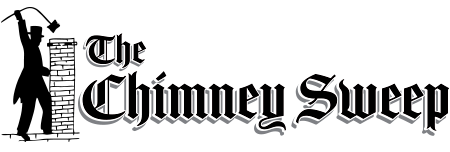Fire Building
Understanding Combustion
As firewood burns it goes through three stages. The following info should help you with some valuable insight.
First Stage - Water
Up to half the weight of freshly cut logs is water. After proper seasoning only about 20% of the weight is water. As the wood is heated in the firebox, this water boils off, consuming heat energy in the process. The wetter the wood the more heat energy is consumed That is why wet wood hisses and sizzles while dry wood ignites and burns easily.
Second Stage - Smoke or Flame
As the NEW wood heats up above the boiling point of water, it starts to smoke. The hydrocarbon gases and tars that make up the smoke are combustable if the temperature is high enough and oxygen is present. When the smoke burns, it makes the bright flames that are characteristic of wood combustion. If the smoke does not burn in the firebox, it may condense in the chimney, forming creosote.
Third Stage - Charcoal
As the fire progresses and most of the hydrocarbons have vapourized, charcoal remains. Charcoal is almost 100% carbon and burns with very little flame or smoke.Charcoal is a good fuel that burns easily and cleanly when enough oxygen is present. Of the total energy content of the wood you burn, about half is in the form of smoke, and half is charcoal. The challenge in burning wood efficiently is to burn off the smoke before it leaves the firebox. The rest of the suggestions in this fact sheet will help you to get more heat from your wood, and reduce creosote deposits and air pollution
Preparing Firewood
Firewood should be split and stacked under cover in the early spring to be ready for burning inthe fall. After drying in the summer sun and warm winds, the wood should be below 20% moisture content. A piece of dry firewood has large cracks or checks in the end grain. Look for these when judging the quality of firewood. Hardwoods and softwoods are chemically similar - the difference is density. Hardwoods, being more dense, produce a longer-lasting fire. However, people who live in Canada's North, where hardwoods do not grow, are able to heat their homes quite effectively with softwoods. The fireboxes of their wood stoves need to be larger to handle the greater volume of wood.
Starting or Rekindling the Fire
When starting a fire, use plenty of crumpled newspaper and kindling. As a guide, fill the fire box completely with loosely crumpled newspaper and hold it down with at least ten pieces of finely-split dry kindling. Softwoods make the best kindling. Find out where the combustion air enters the firebox of your stove, and light the fire there so that the fire gets plenty of air. Open the air inlets fully. When rekindling, rake the live coals toward the combustion air inlet of the firebox. Make a compact pile of charcoal and place the kindling and small piece of wood on and behind it. Open the air inlets fully to produce rapid combustion.
Fuel Load Geometry
Avoid loading only one or two pieces of wood on a coal bed most often they will not burn completely because heat is given up faster than it is produced. A minimum of three pieces is needed to form a sheltered pocket of glowing coals which sustains the fire. A loosely-stacked load of wood (in a crisscross arrangement) burns fast; a tightly-packed load of wood burns more slowly.
The Firing Cycle
Don't expect perfectly steady heat output from your stove. Wood burns best in cycles. A firing cycle is the time between the ignition of a fresh load of wood and its consumption to a Coal bed. Each firing cycle should provide between four hours and eight hours of heating. Plan the cycles to match your household routine. For example, if someone is home all day, use four cycles: morning, noon, evening, and before bed. If the house is empty during the day, use three cycles: morning, late afternoon, and before bed. Adjust the amount of wood used for each cycle so that only enough coals are left to ignite the next load. Always load at least an hour before bed so you have time to flash the load before turning the air control down for an overnight burn.
The Flash Fire Technique
A flash fire is a small amount of wood burned quickly. It is useful when you don't need much heat or when someone is available to tend the fire.The flash fire eliminates the smouldering fires that are common in spring and fall. To build a flash fire, rake the charcoal towards the air inlets and load at least three small pieces of wood on and behind it. The pieces should be stacked loosly in a crisscross arrangement. Open the air inlet to produce a bright, hot fire. The air supply can be reduced slightly as the fire progresses, but never enough to extinguish the flames. When only charcoal is left, the air supply can be reduce further to avoid cooling the coal bed.
The Extended Fire
To acheive a longer-lasting fire, rake the coals towards the air inlets and use larger pieces of wood placed compactly in the firebox. Placing the pieces close together prevents the heat and flame from penetrating the load and saves the buried pieces for later in the burn cycle. Open the air inlets fully and leave them open for between 30 and 45 minutes, depending on the load size. When the outer surface of the pieces has a thick layer of charcoal, reduce the air control setting, but not enough to extinguish the flames.
Removing Ashes
When you follow the suggestions for raking of the coalbed, you will find that ashes accumulate at the front of the firebox. After an overnight fire, the remaining live coals are found at the back of the firebox, furthest from the air inlets. The ash at the front of the firebox can be removed without disturbing the coalbed. After a small amount of ash is removed, the coals can be raked and the stove loaded. Most modern appliances operate best when a small amount of ash is removed each morning before the first fire of the day is built.
In keeping with tradition here we are three generations of Chimney Sweeps serving Dufferin County, Caledon, Erin and Palgrave areas.
For decades people have had a love affair with wood fires, a cosy fire on a cold blustery night curled up with a good book and a warm drink is the ultimate in comfort on a winter evening. "The perfect fire" is "all woodheat can be.

Give Us a Call
Phone: 519-941-5213

Send Us an Email
thechimneysweep@sympatico.ca
Home | About Us | Services | FAQ’s | Knowledge Base | Resources | Contact Us
Website Design by Rood's Media




